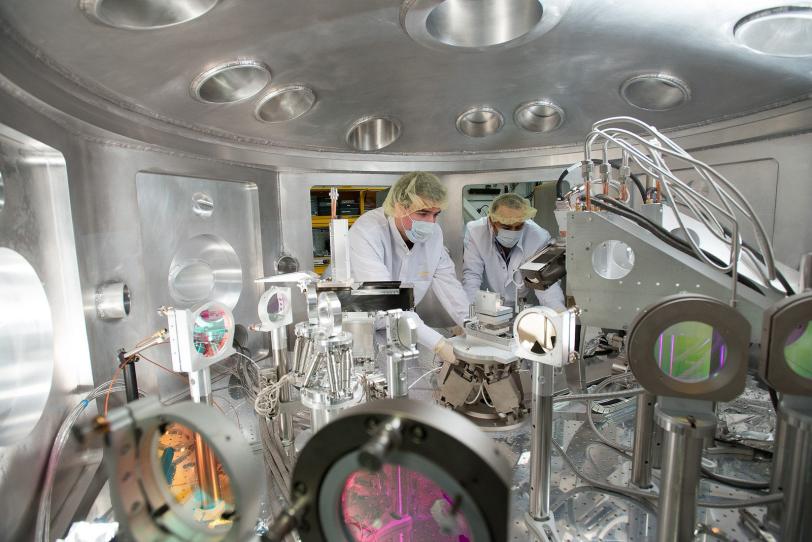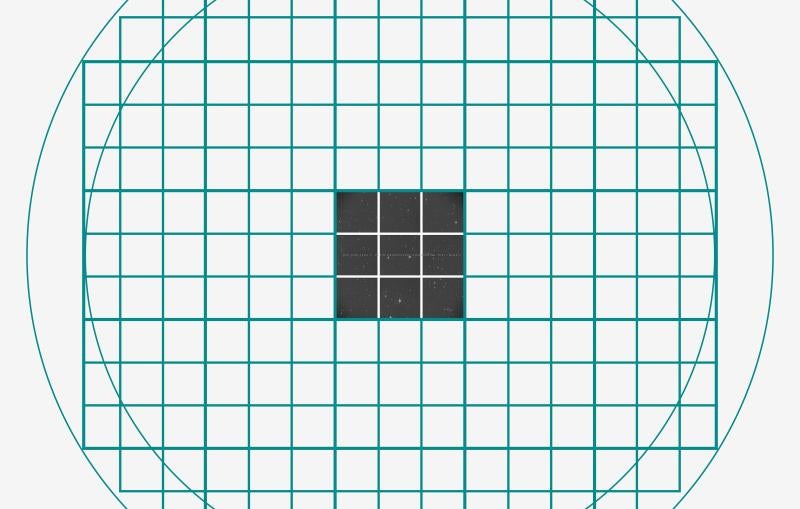Peering into 36-million-degree plasma with SLAC’s X-ray laser
In a first, researchers measure extremely small and fast changes that occur in plasma when it’s zapped with a laser. Their technique will have applications in astrophysics, medicine and fusion energy.
When you hit a piece of metal with a strong enough laser pulse you get a plasma – a hot, ionized gas found in everything from lightning to the sun. Studying it helps scientists understand what’s going on inside stars and could enable new types of particle accelerators for cancer treatment.
Now a team of researchers has used an X-ray laser to measure, for the first time, how a plasma created by a laser blast expands in the hundreds of femtoseconds (quadrillionths of a second) after it’s created. Their technique could eventually reveal tiny instabilities in the plasma that swirl like cream in a cup of coffee.
The experiments at the Department of Energy’s SLAC National Accelerator Laboratory involved scientists from SLAC, German research center Helmholtz-Zentrum Dresden-Rossendorf (HZDR) and other institutions, and was reported in Physical Review X in September.
Blasting cancer cells
Led by scientist Thomas Kluge at HZDR, the researchers have been working to harness the behavior of plasma to create a new type of particle accelerator for proton therapy, an existing cancer treatment that involves blasting tumors with charged particles rather than X-rays. This approach is gentler on the surrounding healthy tissue than traditional radiation therapy.
When solid matter is zapped with a laser the interaction forms a plasma, causing a steady stream of protons to burst out of the back side of the sample. The researchers hope to use the proton streams to storm tumors and obliterate cancer cells. But producing these fast protons in a reliable way requires a better understanding of how plasma changes as it expands.
“Instabilities can arise from the complex streams of electrons and ions moving back and forth in the plasma,” Kluge says. “You probably know one of these instabilities from the mushroom-shaped clouds that form when you drip milk into your morning coffee.”
Hotter than ever
Until now, it was difficult to probe plasma changes directly because they’re so tiny and happen on extremely fast time scales. This work, says Josefine Metzkes-Ng, co-author and junior group leader at HZDR, could only be done at SLAC where the researchers used a high-power, short-pulse optical laser beam to create the plasma and the Linac Coherent Light Source X-ray free-electron laser to probe it.
At the Matter in Extreme Conditions (MEC) instrument at LCLS, researchers create incredibly hot and dense matter that mimics the extreme conditions in the hearts of stars and planets. Simulations show that the researchers achieved a new temperature record for matter studied with a free-electron laser: 36 million degrees Fahrenheit, almost 10 million degrees hotter than the sun’s core.
The researchers fabricated solid samples that consisted of raised silicon bars, like knuckles sticking out from a fist. They found that in the quadrillionths of seconds after they zapped the sample with intense, short pulses from the optical laser, tiny amounts of plasma stacked up between the knuckles. A special form of scattering that uses X-ray pulses from LCLS allowed them to peer inside the plasma to follow its evolution.
This technique will pave the way for better understanding plasma instabilities, allowing researchers to create proton sources for cancer therapy with relatively small footprints that, unlike conventional accelerators, can be operated within a hospital. It will also be useful in research relevant to fusion energy, other types of novel particle accelerators and laboratory astrophysics.
Speedy cosmic particles
Siegfried Glenzer, director of the High Energy Density Division at SLAC, who helped with the paper, is especially excited about the prospect of using this technique to better understand the astrophysical processes that give cosmic rays – subatomic space particles that plunge into Earth’s atmosphere at almost the speed of light – their extreme energies.
The highest-energy cosmic rays can pack a force comparable to that of a major league fastball hurtling toward a batter at 100 mph, condensed into a single subatomic particle. To accelerate a proton to the same energies as these cosmic rays, scientists would have to build an accelerator that sends particles traveling from Earth to Saturn and back.
Using LCLS, scientists are able to recreate some of the astrophysical processes that may produce these high-energy cosmic rays, such as energetic jets that shoot out from the turbulent hearts of active galaxies. Now the new technique will allow them to directly observe the plasma instabilities that might be responsible for accelerating cosmic rays.
“Cosmic rays are the largest particle accelerators known to mankind,” Glenzer says. “They have a million times higher energy than particles accelerated in the Large Hadron Collider. Recently, astronomers traced a cosmic ray particle to an active galactic nucleus jet. Our goal is to produce these types of jets in the laboratory so we can study the formation of these instabilities and show whether they can accelerate particles to such high energies and, if so, how it happens.”
Flipping the light switch
According to Kluge, “This research has opened the black box of how short-pulse lasers interact with solids, allowing us to directly see a little of what's going on, which previously could only be simulated with largely unverified atomic models.
“It's a little like switching on a light,” he says. “Although we have some ideas, we don't know what we will find, but surely it will help us develop the next generation of laser-based ion accelerators and could shape new applications in astrophysics, medicine and plasma physics. For me as a theorist and simulation guy, the most exciting thing about this project is that I can now lay my simulations aside and look at the real thing.”
The research team also included scientists from Technical University Dresden, European XFEL, University of Siegen, Friedrich Schiller University Jena and Leibniz Institute of Photonic Technology, all in Germany.
LCLS is a DOE Office of Science user facility. Funding was provided by the DOE Office of Science.
Citation: Kluge et al., Physical Review X, September 2018 (10.1103/PhysRevX.8.031068)
For questions or comments, contact the SLAC Office of Communications at communications@slac.stanford.edu.
SLAC is a multi-program laboratory exploring frontier questions in photon science, astrophysics, particle physics and accelerator research. Located in Menlo Park, Calif., SLAC is operated by Stanford University for the U.S. Department of Energy's Office of Science.
SLAC National Accelerator Laboratory is supported by the Office of Science of the U.S. Department of Energy. The Office of Science is the single largest supporter of basic research in the physical sciences in the United States, and is working to address some of the most pressing challenges of our time. For more information, please visit science.energy.gov.






